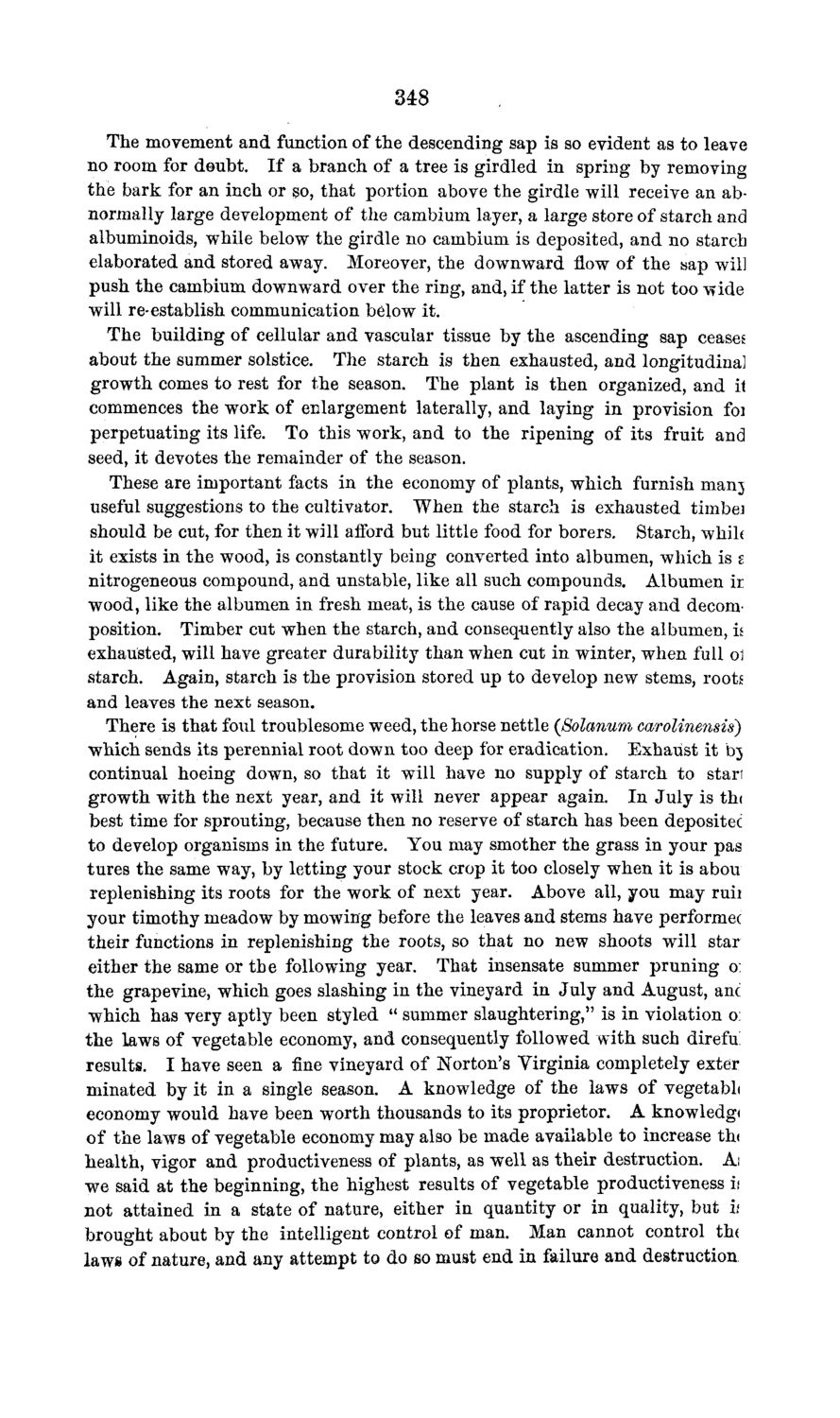| |
| |
Caption: Board of Trustees Minutes - 1869
This is a reduced-resolution page image for fast online browsing.

EXTRACTED TEXT FROM PAGE:
348 The movement and function of the descending sap is so evident as to leave no room for doubt. If a branch of a tree is girdled in spring by removing the bark for an inch or so, that portion above the girdle will receive an abnormally large development of the cambium layer, a large store of starch and albuminoids, while below the girdle no cambium is deposited, and no starch elaborated and stored away. Moreover, the downward flow of the sap will push the cambium downward over the ring, and, if the latter is not too wide will re-establish communication below it. The building of cellular and vascular tissue by the ascending sap ceases about the summer solstice. The starch is then exhausted, and longitudinal growth comes to rest for the season. The plant is then organized, and it commences the work of enlargement laterally, and laying in provision foi perpetuating its life. To this work, and to the ripening of its fruit and seed, it devotes the remainder of the season. These are important facts in the economy of plants, which furnish manj useful suggestions to the cultivator. When the starch is exhausted timbej should be cut, for then it will afford but little food for borers. Starch, whih it exists in the wood, is constantly being converted into albumen, which is s nitrogeneous compound, and unstable, like all such compounds. Albumen ir wood, like the albumen in fresh meat, is the cause of rapid decay and decomposition. Timber cut when the starch, and consequently also the albumen, is exhausted, will have greater durability than when cut in winter, when full o1 starch. Again, starch is the provision stored up to develop new stems, roots and leaves the next season. There is that foul troublesome weed, the horse nettle {Solarium carolinensis) which sends its perennial root down too deep for eradication. Exhaust it bj continual hoeing down, so that it will have no supply of starch to stan growth with the next year, and it will never appear again. In July is th< best time for sprouting, because then no reserve of starch has been depositee to develop organisms in the future. You may smother the grass in your pas tures the same way, by letting your stock crop it too closely when it is abou replenishing its roots for the work of next year. Above all, you may ruii your timothy meadow by mowing before the leaves and stems have performec their functions in replenishing the roots, so that no new shoots will star either the same or the following year. That insensate summer pruning o: the grapevine, which goes slashing in the vineyard in July and August, anc which has very aptly been styled " summer slaughtering," is in violation o: the laws of vegetable economy, and consequently followed with such direfu results. I have seen a fine vineyard of Norton's Virginia completely exter minated by it in a single season. A knowledge of the laws of vegetabh economy would have been worth thousands to its proprietor. A knowledgi of the laws of vegetable economy may also be made available to increase th< health, vigor and productiveness of plants, as well as their destruction. Ai we said at the beginning, the highest results of vegetable productiveness ii not attained in a state of nature, either in quantity or in quality, but if brought about by the intelligent control of man. Man cannot control the laws of nature, and any attempt to do so must end in failure and destruction
| |